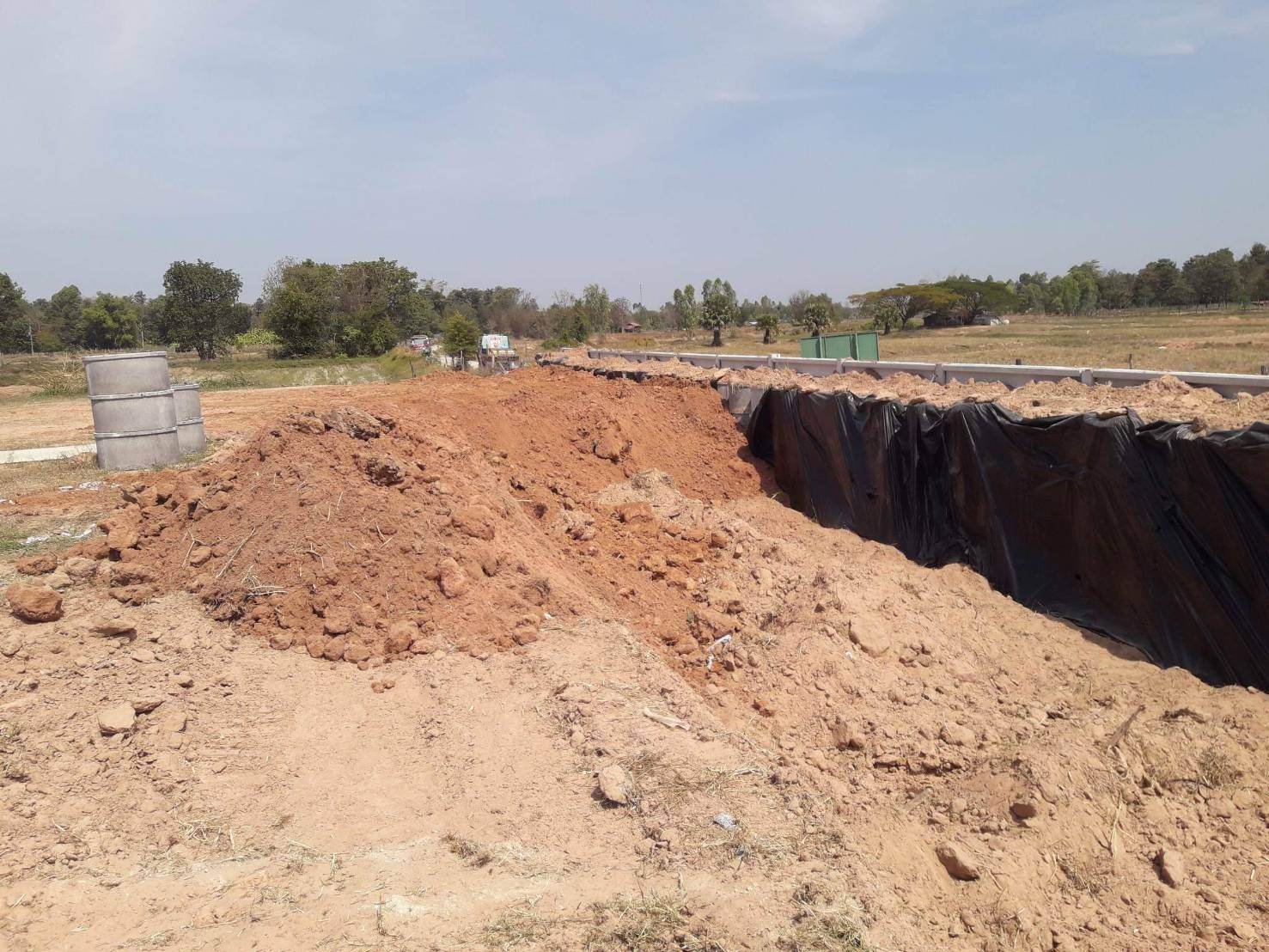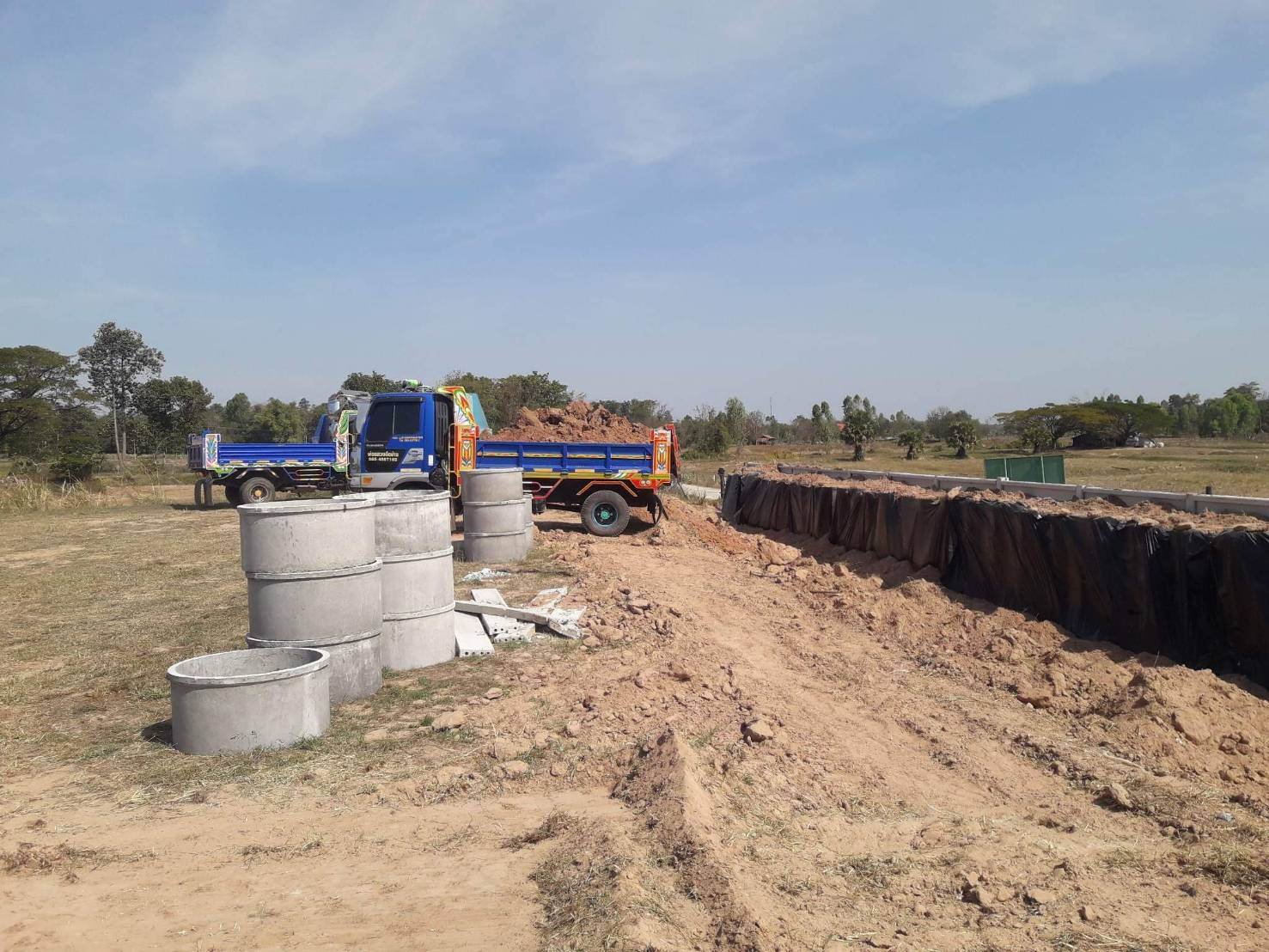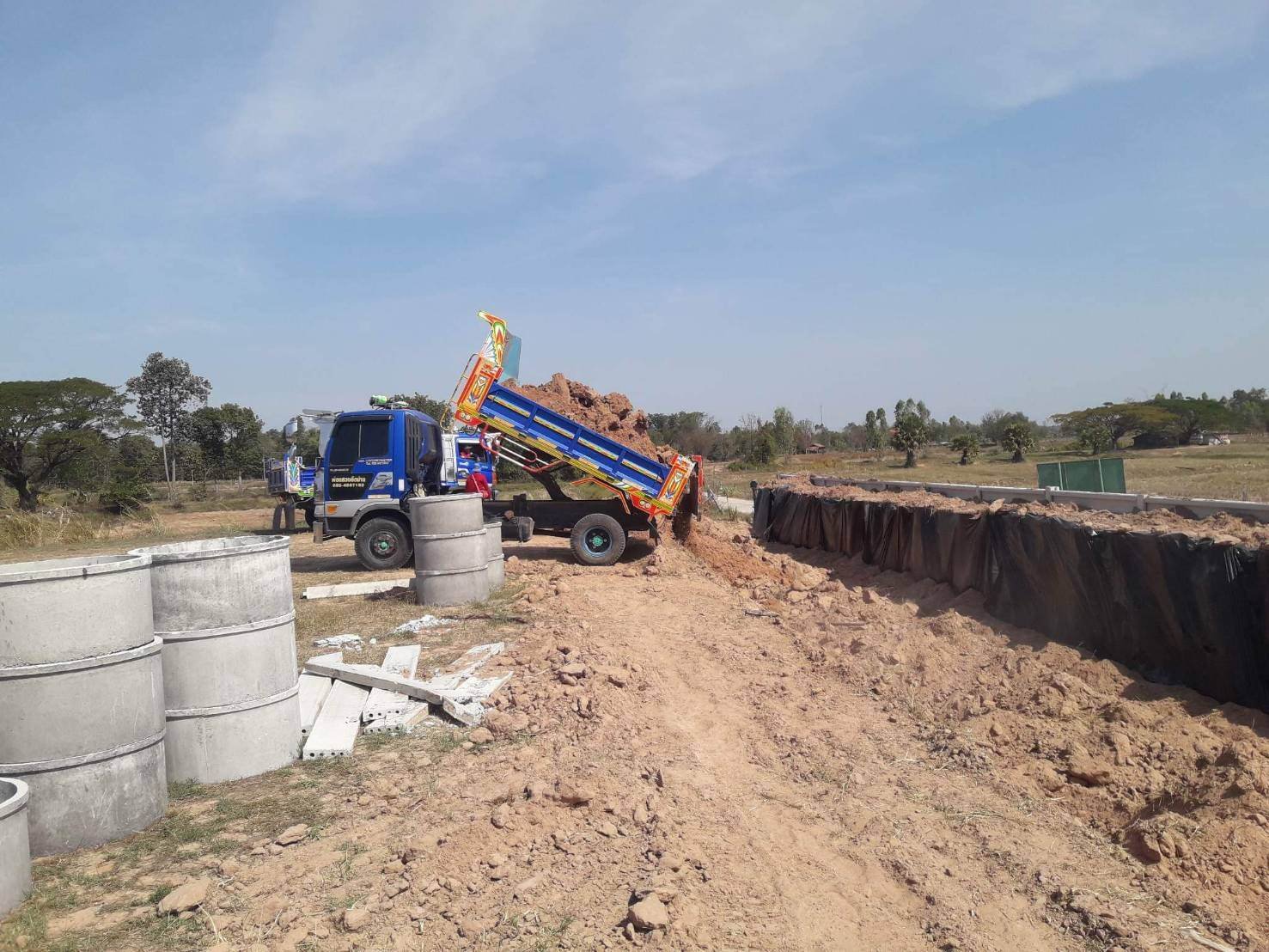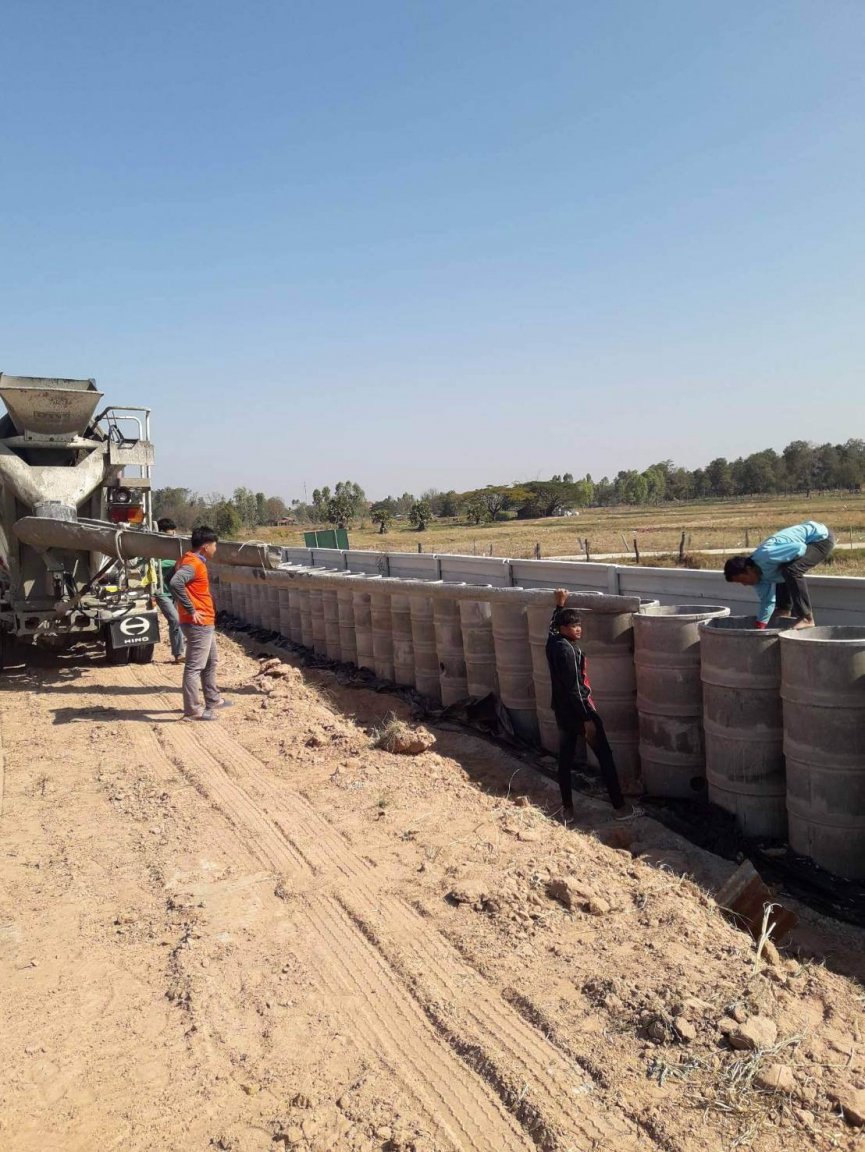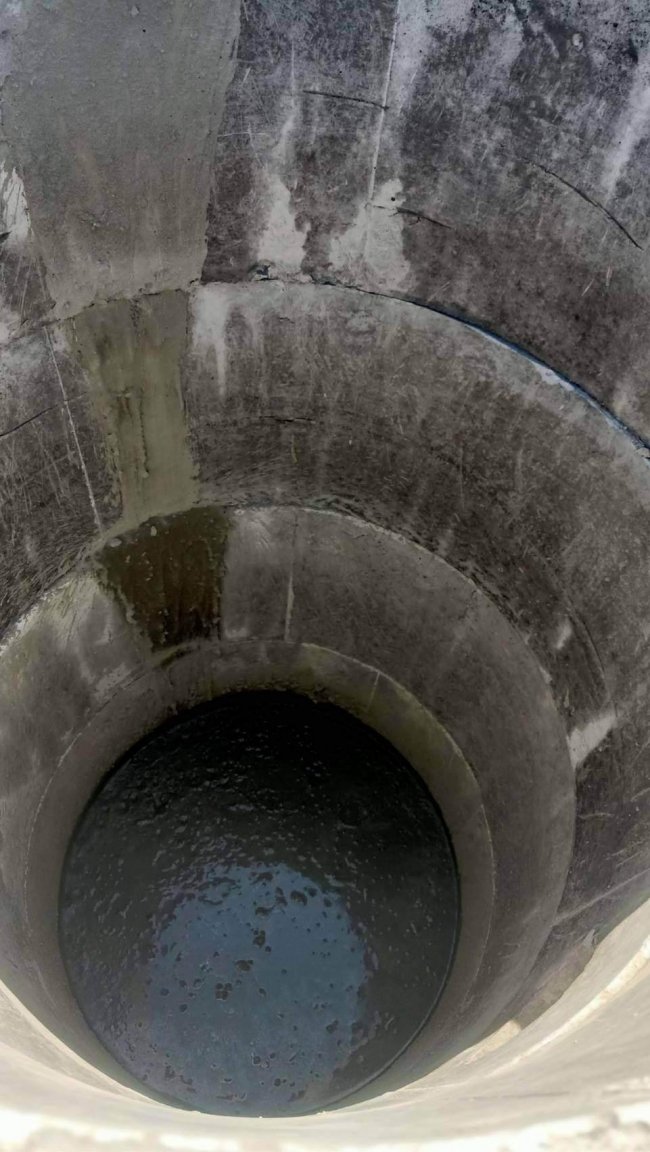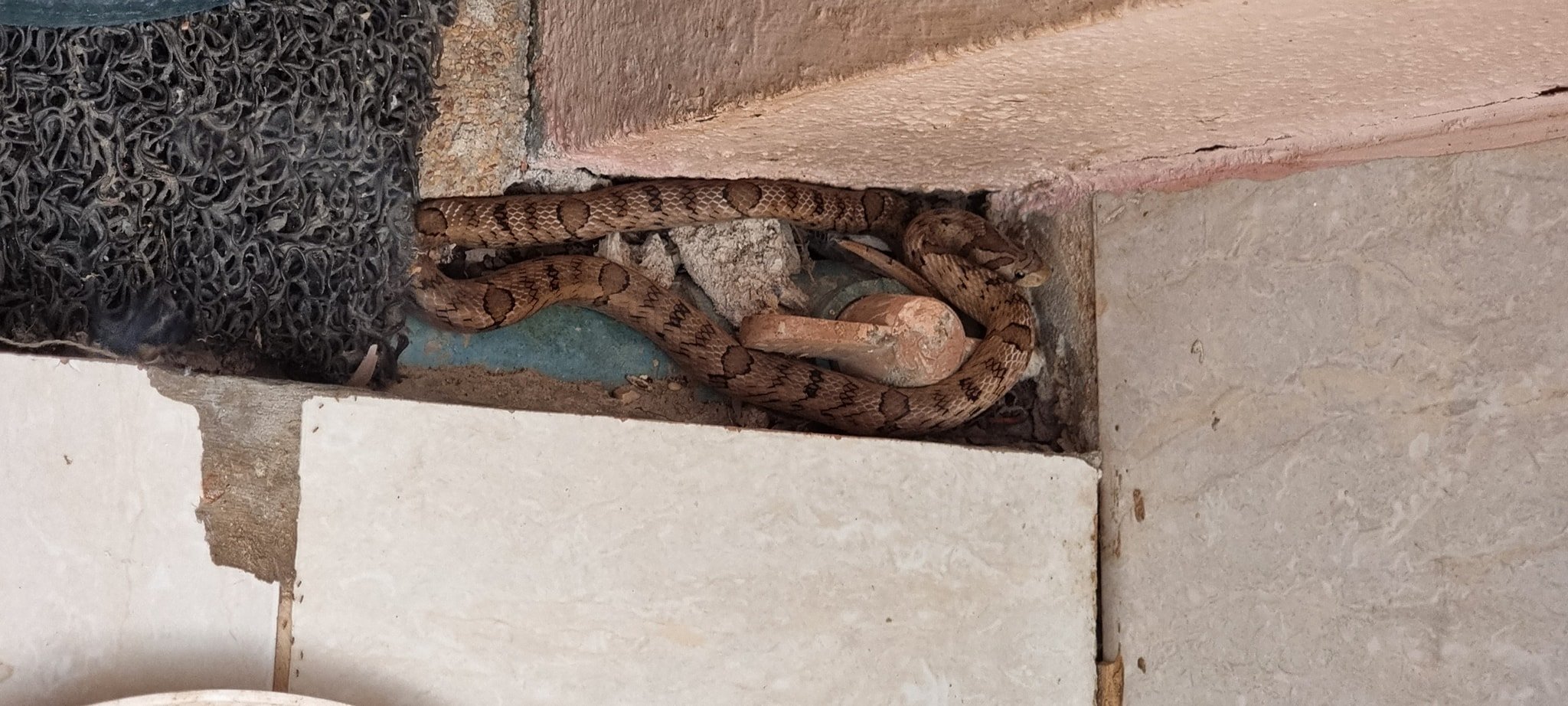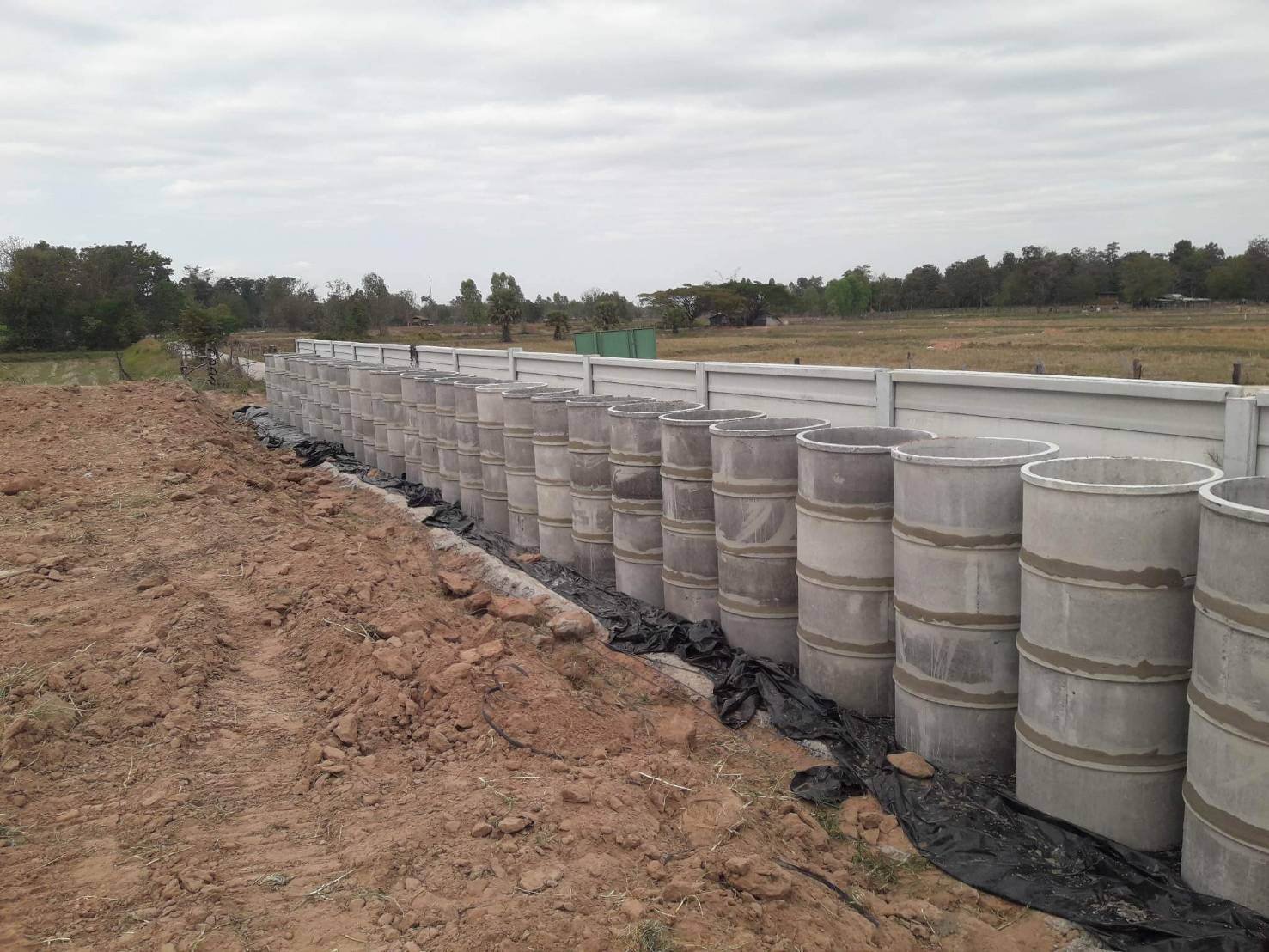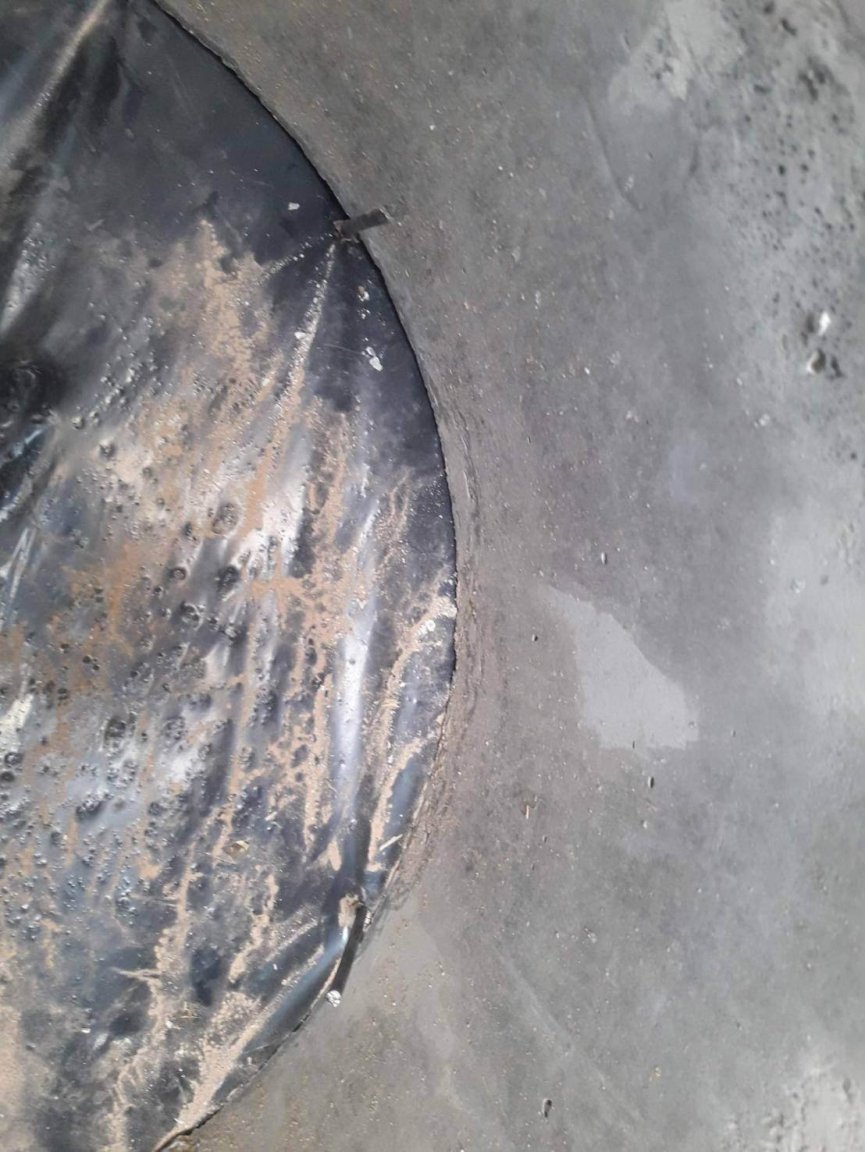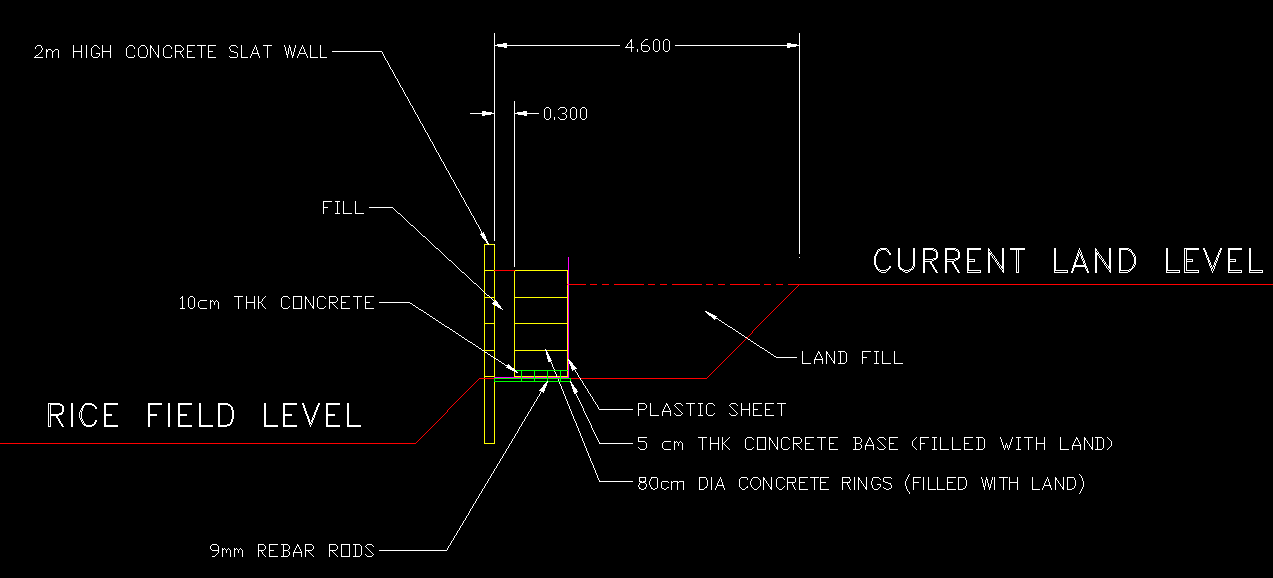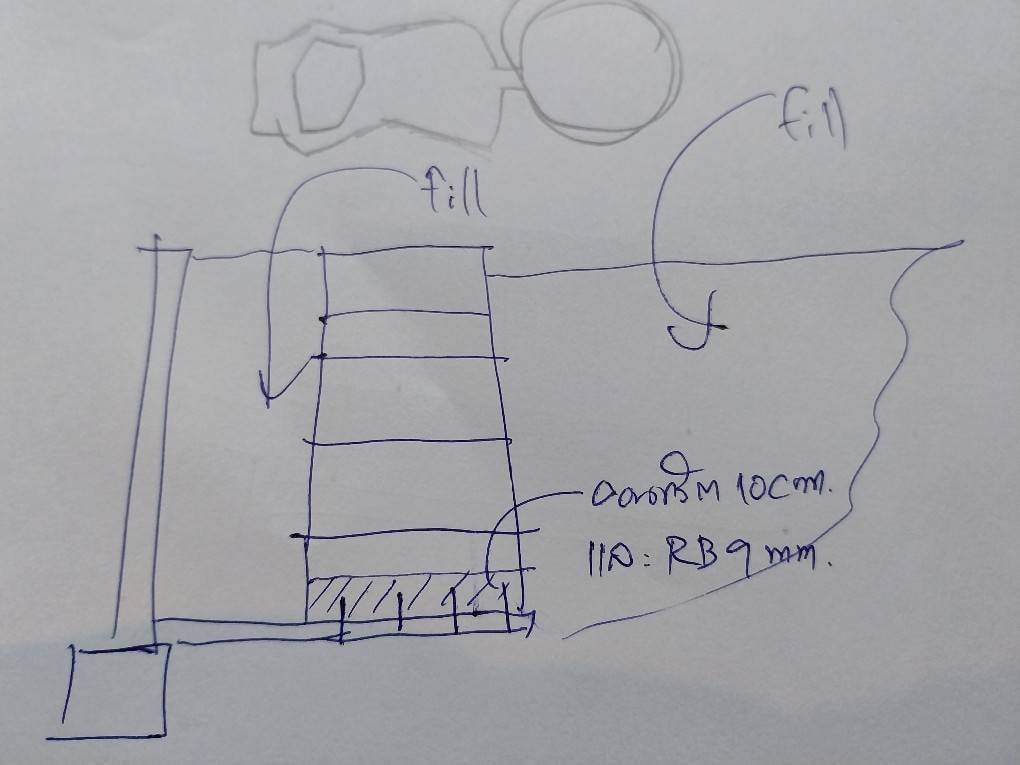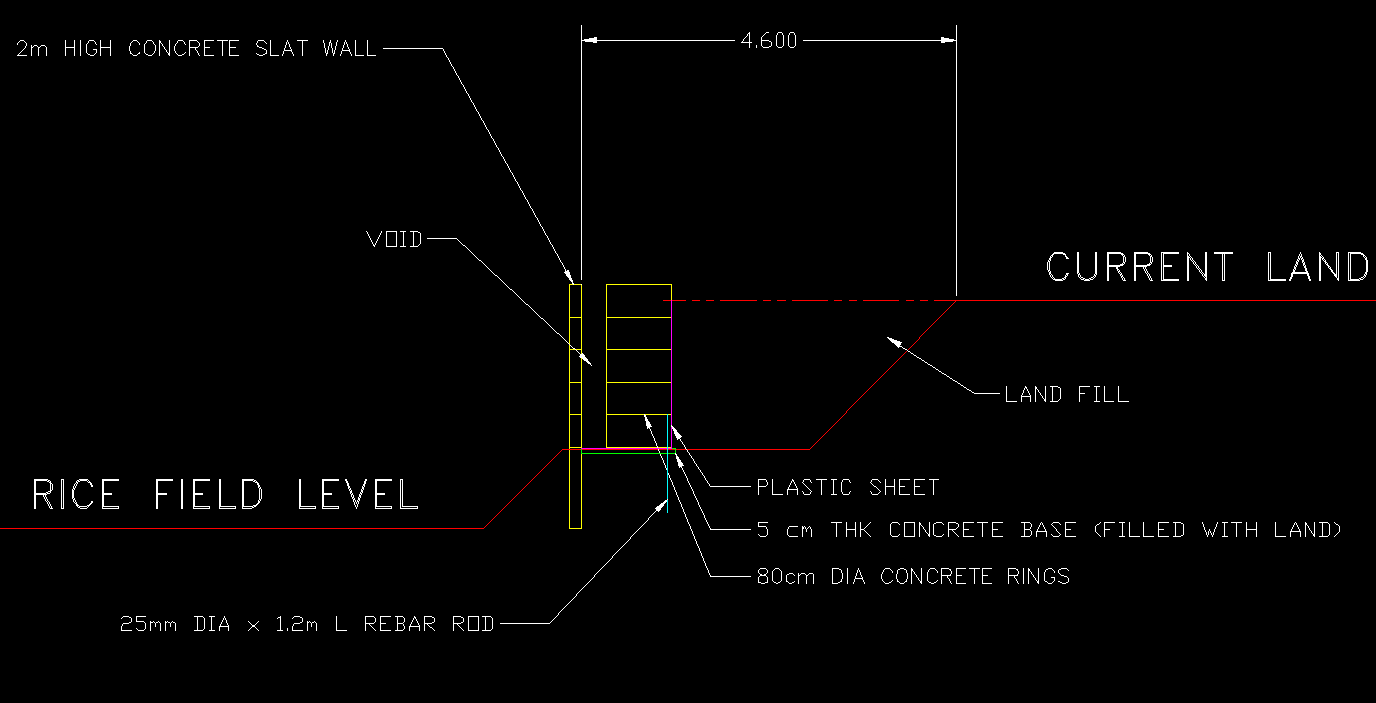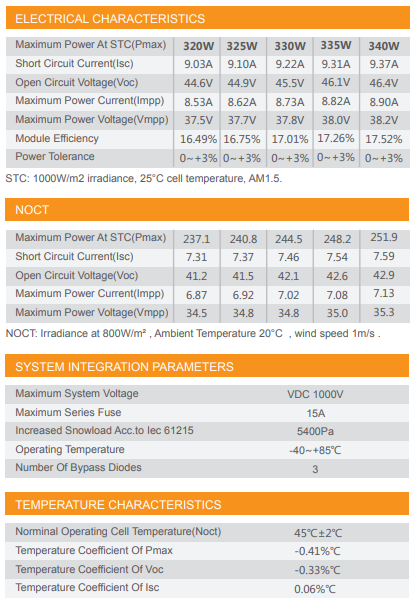-
Posts
1,294 -
Joined
-
Last visited
Content Type
Events
Forums
Downloads
Quizzes
Gallery
Blogs
Everything posted by Encid
-
-
And this morning the concrete truck was there to half fill the bottom rings with concrete... so the unpainted rebar will not be rusting now.
-
That's 2 votes now for leaving the "snake gap" open. Any others?
-
The gap will be 2m high on the wall side and 1.6m high on the ring side. As said earlier we plan to plant different coloured bougainvillea in the top of each ring, which will add a ton of colour to the top of the wall and eventually cascade over the side. Being a spiny plant it will also be a good security measure because anyone trying to climb over that wall in the future (from either side) will be bleeding profusely. So I don't forecast anything getting dropped down there at all.
-
Thank you. If you go back further in this topic you will see the reasons why we are where we are now... initially our neighbour complained to the local pooyai baan that land from our fill exercise was spilling onto her land, so one morning my inlaws had a visitation by a horde of people including our pooyai baan and it was agreed to excavate the fill back from the boundary until the chanote survey markers were uncovered. But instead of firstly digging by hand to reveal exactly where the marker were, then excavating back just 1m or so, the back hoe operator excavated back some 4-5m and my FIL accepted it. Once the survey markers were revealed (they were only just covered by a couple of cm of dirt) our troublesome neighbour accepted it and left, so the pooyai baan accepted it and everyone left except the opportunist back hoe operator who wanted payment of course. We looked at fence/wall options and the concrete slat wall was the cheapest and quickest to build (with local labour - see also earlier in this thread) and we ensured that it was built just inside the chanote survey markers without disturbing them, and it now serves as a big middle finger salute to our formerly troublesome neighbour. When I first started laying out the plans for our guest house and main house I measured the land as best as I could without using a theodolite (I used a CAD drawn protractor on A4 paper to measure angles, and a 30m tape measure) and realised that if we reclaimed the over-excavated land we would have an additional 216 sq.m. (or 54 talang wah) of usable land... and that's excluding the concrete ring retaining wall. I did look at the possibility of using gabion baskets, but they would have been too expensive as there are no quarries anywhere near us for hundreds of km. The nearest rock quarries would probably be in Saraburi, so the cost of transporting the rocks to our site would have been excessive. It would also have been a shame to hide the gabion wall after completion by covering it up with land fill... they do look wonderful. So that's why we are where we are today.
-
There already is a 20cm dia PVC drain pipe under the short section of slat wall at the southern end... we put that in months ago to drain the water coming down the slope away to the farm... and yes, there was a lot of water that needed to be drained last year. And I'm not really anticipating a lot of rain water will accumulate in the void... it's only 30cm from the back of the slat wall to the edge of the concrete ring.
-

New white grout between ceramic tiles turning yellow just after 1 month
Encid replied to AndyAndyAndy's topic in DIY Forum
Particularly in foot traffic areas. It doesn't matter how clean your feet are... unless you wear socks or slippers, white grout will soon become discoloured by human bare foot traffic. -
Funny you should mention the (general) Thai fear of snakes... yesterday morning my wife came running into the house screaming "snake... snake!" I asked her where it was and she said in our (external Thai) kitchen. I grabbed the longest object near at hand, which happened to be a 50cm long plastic spoon that I had been using for stirring up paint, and headed bravely into the kitchen. Once inside, I looked down and around all the corners... you know, the places snakes usually retreat to if it gets noisy! Sure enough, curled around our water isolation valve was this little beauty... a harmless Banded Kukri... about 50cm long. I think it was more scared than my wife... 555. Anyway I used the spoon handle to gently ease him out of the kitchen and towards the front gate and garden... only about 5m away. I don't think he'll be back! Anyway, back on topic... so that's 1 vote for leaving the "snake gap" open. Any others?
-
Work on the retaining wall is progressing well in cool and overcast conditions... Note the 9mm rebar rods inside the inner wall of the rings in the photo above? 4 rods per ring to help prevent axial movement. It looks like they forgot the paint though... The rings have also been grouted together. Next step is to lift up the plastic water barrier and fix it to the top of each ring stack and back-fill with land up to the existing land level. After that the rings will be back-filled with land. I am not sure whether to fill the 30cm gap between the concrete slat wall and the ring retaining wall... my builder wants to as he is concerned that it will become a haven for snakes if we don't. Thoughts?
-

PEA and Solar how low can you go?
Encid replied to MJCM's topic in Alternative/Renewable Energy Forum
Same here in Najomtien... 1 bill per month, 12 bills per year. Our meter man usually visits our village on the 18th too. -

Solar and Time of Use electricity
Encid replied to Bandersnatch's topic in Alternative/Renewable Energy Forum
Which only spins in one direction right? -

Planning an off-grid hybrid solar system
Encid replied to Encid's topic in Alternative/Renewable Energy Forum
I would have expected to see it on the datasheet too as that is the logical place for specifications. Maybe Chinese logic is different to ours? @Crossy How is your system configured? You have 1 x Sofar 6kW GTI and 1 x Sofar 5kW Grid-tie hybrid correct? Does it work in a similar fashion to JBChiagRai's system? -

Planning an off-grid hybrid solar system
Encid replied to Encid's topic in Alternative/Renewable Energy Forum
The user manual shows 22A (see page 38). Growatt SPF 3500-5000 ES User Manual.pdf -
At our house in Najomtien (near Pattaya) we have an underground water tank, so the water temperature is always cool... even chilly in the cool season. We installed 8kW Redring water heaters (from the UK) 15 years ago and have never had a problem getting piping hot water whenever we want. We mounted them under the bathroom sink so both the shower and the sink have a hot water supply (essential for shaving). When the weather gets warmer and the ambient temperature of the water in the tank rises, we turn down the heaters for a couple of months so we can enjoy cool showers. Sure they use a bit of power when you want a nice hot shower, but it's worth it. I will be installing similar in our new build up-country soon.
-
Another company to visit is iWater in Khon Kaen. They have pretty much everything you could possibly want and if you take along a water sample from your bore (and your town water) they can test it for you and recommend what sort of filtration you might need. They also distribute and service Grundfos pumps... which are (arguably) the best domestic water pumps on the market. They also sell RO units if you want to consider making your own drinking water.
-
My builder has come up with a good alternative using available (surplus) rebar. The first concrete ring will be placed on the plastic sheet on top of the concrete base, 30cm away from the edge of the slat wall. Holes will then be drilled in the concrete base and RB9mm rods inserted in the holes. Then a 10cm layer of concrete will be poured into the ring, covering the rods (so they won't need painting). This will effectively anchor every base ring from movement. Having performed the land survey the other day using a laser level, it is evident that the amount of rain we have had over the past year has resulted in significant land settlement... which is a good thing. We have had a settlement of some 60cm of the original 2m high fill, which is about 30%. Also it means that our retaining wall will only need to be 4 concrete rings high, not 5. And the tops of them will not be visible from the other side of the concrete slat wall (public viewing from the road). Another good thing.
-
We have another day to do some tests as the concrete is curing then the plastic sheet and rings will be placed tomorrow. Getting the bars painted will take time, but I hear what you say... maybe spray painting will be a quick option as opposed to finding and using a trough with limited time and people standing around. I better get onto it right away...
-

Planning an off-grid hybrid solar system
Encid replied to Encid's topic in Alternative/Renewable Energy Forum
That sounds very much like the sort of system I want. At our current energy inefficient house in Najomtien we are consuming 1,500 to 1,800 kWh per month and our PEA bill is around 8,000-9,000 baht. With the new build the house(s) will be considerably more energy efficient, however we will have more occupants so personal energy consumption will be higher. MUST hybrid inverters do have a reputation for being noisy when the fans are operating. I plan on doing something similar. @Bandersnatch have you ever tried exporting with your Growatts? -
I like that idea. 1.2 m long x 1"dia rebar hammered into the land side of the concrete slab, and the bottom ring placed over it will keep the load off the concrete slat wall. Just like this...
-
Currently the plan is to have a 20cm gap between the back of the wall posts and the leading edge of the concrete rings. Something to monitor in the future.
-

Planning an off-grid hybrid solar system
Encid replied to Encid's topic in Alternative/Renewable Energy Forum
Do you have a diagram of how yours is configured that you could share? -

Planning an off-grid hybrid solar system
Encid replied to Encid's topic in Alternative/Renewable Energy Forum
Currently we have a (reversible) spinning disk meter so having GTI's is possible and, like you, we could use AC all day long to keep the house cool by using the peak solar generating window and reducing solar curtailment. But... we want the security of having the whole-of-house UPS functionality, hence going down the hybrid route. Daily fluctuating voltages and brownouts from the PEA grid are a common occurrence in our part of Thailand. And... every time there is a large thunderstorm with frequent lightning in our vicinity, the grid is shut down completely for a few hours... sometimes longer. Ideally I would like a system that could unofficially perform net-metering (using the PEA grid to "bank our energy" for later use), but also need a battery backup (with minimal cycling of batteries to prolong their operating life). Is it possible to combine hybrid inverters with a grid-tied inverter? -

Planning an off-grid hybrid solar system
Encid replied to Encid's topic in Alternative/Renewable Energy Forum
Oops! I missed that... -

Planning an off-grid hybrid solar system
Encid replied to Encid's topic in Alternative/Renewable Energy Forum
Do you think I should reduce the number of panels on the east and west arrays? Am I really likely to get 100% efficiency in power production from those arrays? Is it possible to combine panels from different directional arrays on a single string? Please excuse me from asking this question if it seems naïve to some but I am new to this and am learning... -

Planning an off-grid hybrid solar system
Encid replied to Encid's topic in Alternative/Renewable Energy Forum
I'm not sure where you get the V limit of 450VDC... the datasheet gave an "operating range limit" of 430VDC, it makes no mention of a "maximum range limit". According to the 340W panel datasheet the Voc is 46.4V, so wouldn't 10 panels in one string exceed the limit? 464VDC. 9 panels in one string would be 417.6VDC, which is well within the "operating range limit" of 430VDC. Or am I missing something here?


